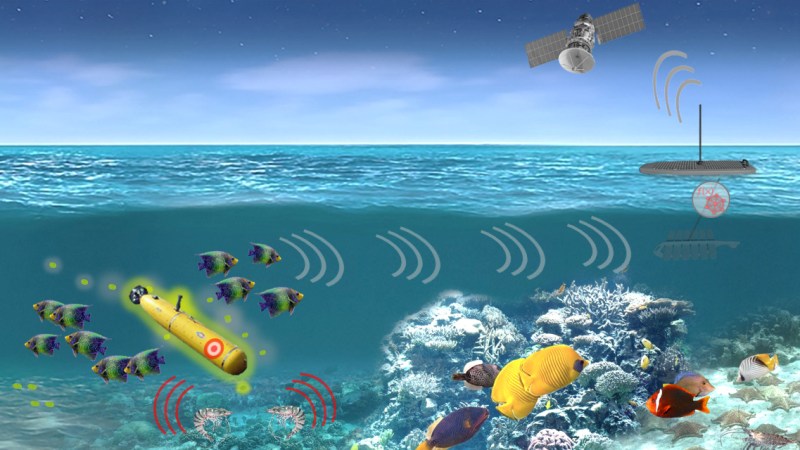The ocean is a hostile environment for man-made equipment, no matter its purpose. Whether commercial fishing, scientific research, or military operations, salt water is constantly working to break them all down. The ocean is also home to organisms well-adapted to their environment so DARPA is curious if we can leverage their innate ability to survive. The Persistent Aquatic Living Sensors (yes, our ocean PALS) program is asking for creative ideas on how to use sea life to monitor ocean activity.
Its basic idea is simple: everyday business of life in the ocean are occasionally interrupted by a ship, a submarine, or some other human activity. If this interruption can be inferred from sea life response, getting that data could be much less expensive than building sensors to monitor such activity directly. Everyone who applies to this research program will have the chance to present their own ideas on how to turn this idea into reality.
The program announced it will “study natural and modified organisms” (emphasis ours.) Keeping an open mind to bio-engineering ideas will be interesting, but adding biohacking to the equation also adds to the list of potential problems. While PALS will keep its research within contained facilities, any future military deployment obviously will not. Successful developments in this area will certainly raise eyebrows and face resistance against moving beyond the lab.
But such possibilities are still far away in a future that many never arrive, as is common with DARPA initiatives. Very recently we talked about their interest in brain stimulation and we’ve been fascinated by many DARPA initiatives before that. If PALS takes off, their living sensor nodes might end up face to face with the open-source underwater glider project that won this year’s Hackaday prize.
[via Engadget]

















Algae in relation to ocean temperature.
They could and already have solicited the help of Boris and Natasha.
DARPA needs to revisit Pykrete battleships instead.
This has a touch of the “highly anxious fainting goats and cars for blind people” about it. It could only be a DARPA idea.
I’ll bite though… we are looking for enemy submarines aren’t we… just get Donald to speak to his pal Boris, I hear they are great buddies. I’m sure he will know where they all are.
Just give the fishes some activity tracking devices and Strava accounts xD
+1
In Soviet Russia, “Немо” and “Дори” find YOU.
I suspect the “modified organisms” would be more likely to have electronic implants rather than genetic modification. Apparently someone at DARPA wants sharks with freaking laser beams.
>>”…getting that data could be much less expensive than building sensors to monitor such activity directly.”
I’m not sure I entirely buy that. Sure you don’t have to develop hydrophones to detect the specific frequencies unique to Akula II class submarine nuclear turbines but you still have to develop and/or deploy sensors to track Willy, Flipper, Dory, and Nemo. The only upshot is you could probably piggy back on NOAA and other research institutes moorings as they monitor fishery and general ocean health, providing some financial and location obscurity.
Developing and deploying a massive sensor network that is hardened to maritime elements and malicious interference isn’t cheap.
Whenever something previously innocuous and innocent gets drafted for a military, or even for a political purpose, or even for any particular purpose which has sides whatsoever, it inevitably becomes a target and is endangered. Do we really want that?
Gives completely new meaning to “red herring”.